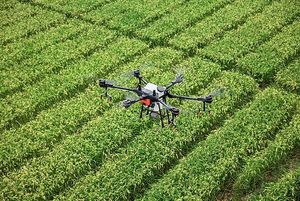2022-03-16
•

Irrigation in India includes a network of major and minor canals from Indian rivers, groundwater well based systems, tanks and rainwater harvesting. Of these sources, Indian irrigation predominantly depends on groundwater.
Reuse of treated wastewater from non-toxic sources like domestic wastewater and food-industry wastewater can be a solution to the extreme shortage of water in some areas. Israel started using recycled slightly brackish water for irrigation, when the severe draught in Israel led to dangerously low water levels in their freshwater sources. However, an issue in India and several developing countries is the use of untreated wastewater for agriculture. Untreated wastewater is pumped into water used for agriculture due to lax regulations, causing environmental and health issues.
Untreated sewage carries with it a whole spectrum of pathogenic hazards including bacterial diseases like cholera, viral diseases like hepatitis, protozoan diseases like dysentery, as well as a parasitic worms like hookworm, roundworm, etc. Sewage can also contain heavy metals and poisonous chemicals. Soil and groundwater can also be contaminated due to sewage-fed farming.
The following measures can ensure safety while easing the waste disposal of factories and municipalities.
• Wetland based bio treatment – For industries with non-toxic waste, like beverage or food industry, sludge can be treated through wetland-based bio treatment. Subsequently, the water quality should be assessed and periodically monitored to ensure that the contaminants are of safe levels. New technology and IoT devices can ensure real-time monitoring and analysis of data.
• STP – Sewage treatment plants at a local government level can treat the sewage and ensure that the output water is safe for farming. It should be monitored for quality and metered for users for pricing and planning.
As per the international norms, a country is classified as water stressed and water scarce if per capita water availability goes below 1700 m3 and 1000m3 respectively. With 1544 m3 per capita water availability, India is already a water-stressed country and is moving towards turning into water scarce. With Indian population exploding, we must look towards unconventional methods to ensure food safety for all.
References: https://www.bbc.com/news/science-environment-40494254

2022-03-15

2022-03-14